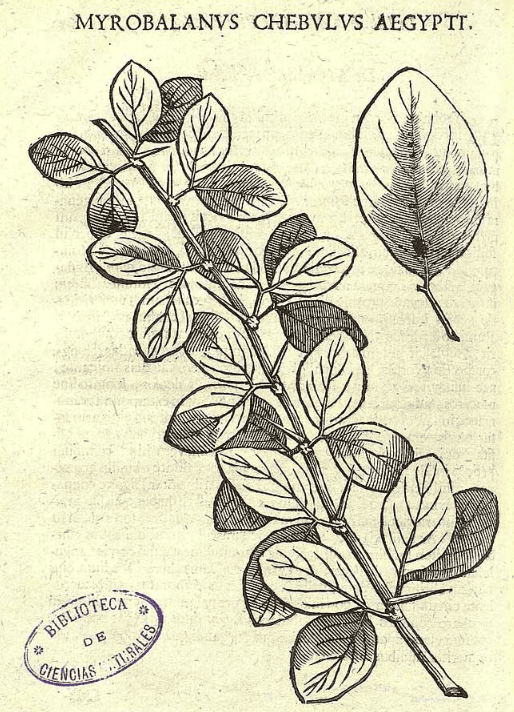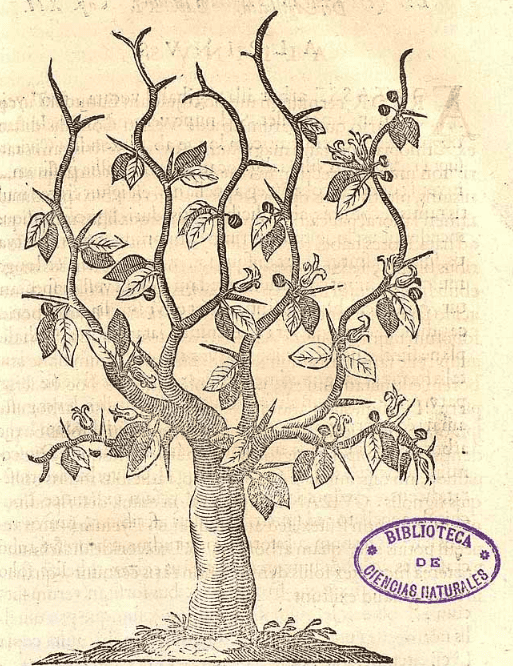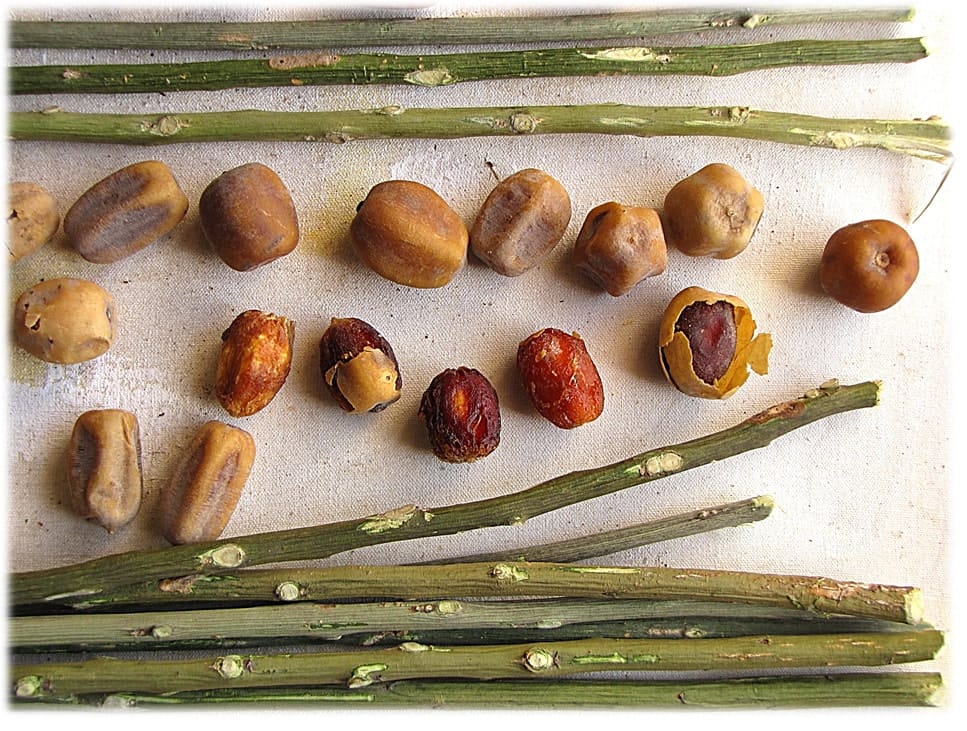Balanites aegyptiaca, Ingudi
Desert Date, Lebbek Tree, Egyptian Chebulic MyrobalanIngudi (Ayurveda)
Nanjunda (Siddha)
Hingan, Hanguul (Unani)

|

|
 Fresh twigs and fruit of Balanites aegyptiaca
Fresh twigs and fruit of Balanites aegyptiaca(Photo by T.K. Naliaka) (Wikimedia)
Botanical name:
Balanites aegyptiaca (syn. B. roxburghii)
Parts used:
Fruit; also Leaf, Bark, Seed,
Temperature & Taste:
Neutral. Sweet
Uses:
1. Clears Phlegm, Stops Cough:
-Whooping Cough, Pneumonia in children
-Tuberculosis
-Seed is also used for Cough and Lung diseases
-leaf, fruit, seed is used for this purpose
2. Clears Heat, Resists Poison
-Skin diseases
-Snake Bite
3. Contraceptive:
-classically used as a contraceptive
4. Kills Worms:
-Worm infestations, especially in children (unripe fruit, seed, bark, leaf)
5. Externally:
-Fruit pulp is applied to Leucoderma
-Seed oil is applied to skin diseases
-paste of the seed kernel made with water is applied to remove Freckles
-fruit pulp mixed with milk is applied to the chest for Pneumonia in children
-fresh twigs are used to clean the teeth
SEED OIL:
-Laxative
-Kills Worms
-applied to Skin diseases and Freckles
-applied to burns
Dose:
All parts are used in similar doses:
Standard Decoction (1 in 10) is given in doses of 50–100 mls.
Seed Oil: 5–10 drops
Substitute:
It was said to be similar in effect to Senega.
Main Combinations:
1. Contraceptive, make pills of Balanite Fruit, Asafetida, mixed with Betel leaf juice; take once daily after menstruation for 9 days to prevent conception.
Major Formulas:
Cautions:
None noted
